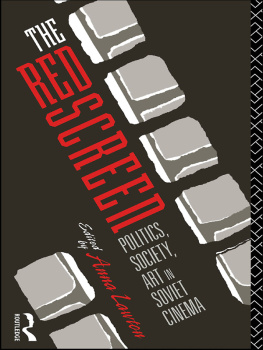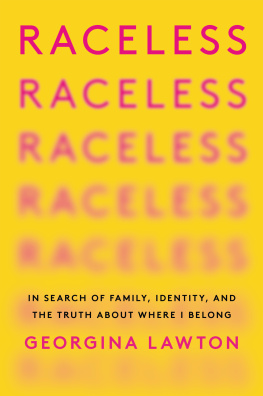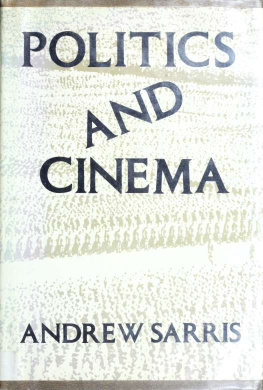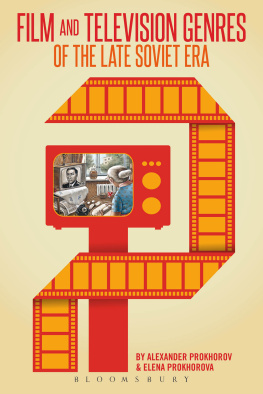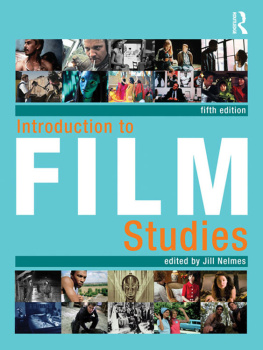THE RED SCREEN
The Red Screen
POLITICS, SOCIETY, ART IN SOVIET CINEMA
Edited by
ANNA LAWTON
First published 1992
by Routledge
11 New Fetter Lane, London EC4P 4EE
Simultaneously published in the USA and Canada
by Routledge
a division of Routledge, Chapman and Hall Inc.
29 West 35th Street, New York, NY 10001
Routledge is an imprint of the Taylor & Francis Group
This edition published in the Taylor & Francis e-Library, 2005.
To purchase your own copy of this or any of Taylor & Francis or Routledges collection of thousands of eBooks please go to www.eBookstore.tandf.co.uk.
1992 Anna Lawton
All rights reserved. No part of this book may be reprinted or reproduced or utilized in any form or by any electronic, mechanical, or other means, now known or hereafter invented, including photocopying and recording, or in any information storage or retrieval system, without permission in writing from the publishers.
British Library Cataloguing in Publication Data
Lawton, Anna
The red screen: politics, society, art in Soviet cinema.
791.430947
Library of Congress Cataloging-in-Publication Data
The Red screen: politics, society, art in Soviet cinema edited by Anna Lawton.
p. cm.
Includes index.
1. Motion picturesSoviet Union. 2. Motion picturesPolitical aspectsSoviet Union. I. Lawton, Anna (Anna M.)
PN1993.5.R9R4 1992
791.436580947dc20 9117947
ISBN 0-203-41798-4 Master e-book ISBN
ISBN 0-203-72622-7 (Adobe eReader Format)
ISBN 0-415-07818-0 (Print Edition)
ISBN 0-415-07819-9 pbk
Introduction: An Interpretive Survey
ANNA LAWTON
Most of the essays included in the present volume were generated from papers presented at the Conference on Soviet Cinema, held at the Kennan Institute for Advanced Russian Studies of The Woodrow Wilson Center in September 1986. This was the first gathering of international Soviet cinema scholars to take place in the United States. The conference participants came from France, Italy, the United Kingdom, and the Soviet Union to meet with American colleagues. At the dawning of change in the Soviet Union the film industry was in the vanguard of reforms, and the conference was intended to provide a historical perspective to the new developments. Later, two more essays were added to the collection to bring it up to date. The resulting volume is unique in its scope, encompassing seventy years of cinema history from the point of view of twenty scholars of different backgrounds and nationalities. While not pretending to be an exhaustive history of Soviet cinema, this collection highlights significant moments in chronological order, offering a challenging montage of detailed close-ups rather than a fully developed panoramic. The reader who is able to follow the jump-cuts in between the essays will acquire a broader knowledge of Soviet cinema and a deeper understanding of its aesthetic developments and sociopolitical function. The following introduction is intended to facilitate this process, as well as to place each essay in its proper context.
Everyone knows that a picture is worth a thousand words. If this is true, motion pictures are worth many thousands of words, perhaps millions. It is therefore not surprising that the characteristic features of film language have been the subject of discussion for almost a century. In particular, attempts have been made to identify the what and the how involved in making a picture as well as the response that the picture in question is designed to elicit in the viewer.
Needless to say, film language presupposes a communication system that extends far beyond aesthetic considerations. Among the arts, cinema occupies a peculiar position. While it can attain the higher spheres of artistic expression, it remains primarily a genre of popular entertainment, as it was at its very beginnings. At the turn of the century, the newly born cinema was looked down upon as a technological oddity, something akin to a sidewalk show or an attraction for the country fair. For this very reason, however, it enjoyed immense popularity. This fact was noted by the avant-garde groups which made the democratization of art an important goal in their programs, and cinema was accordingly hailed as the new centurys art par excellence. Rebellious artists and poets began experimenting with the new medium. But a curious phenomenon occurred, following a pattern common to the other arts subjected to the democratization process. While laying the foundations of cinema aesthetics, the avant-gardists employed esoteric artistic expression, thereby alienating the very public they claimed to be addressing. The average folk kept flocking to the shows of commercial filmmakers which offered them unpretentious melodramas, amusing comedies and straightforward adventure stories.
While this situation is common to many countries, the Soviet Union has its own peculiarities. After the October Revolution, when cinema changed from popular entertainment into mass spectacle, it acquired some of the functions of the mass media education and propaganda. The great directors of the 1920s Eisenstein, Pudovkin, Vertov and Dovzhenkotried to accomplish three things at one time. As avant-garde artists they developed the aesthetics of cinema in daring experimental styles; as Soviet artists they conveyed the substance of their revolutionary philosophy; as democratic artists they wanted to reach and educate the masses. While they succeeded in the first two tasks, they failed in the third, and their films did not usually appeal to large audiences. They were too difficult, not entertaining enough for the urban population accustomed to the light genres of pre-revolutionary cinema. As for the rural masses who were exposed to the few films shown in their villages by agitational units, they were puzzled, amused or simply frightened, but were certainly unable to decode the film language and make any sense out of what they had seen. Other directors of the 1920s who are undeservedly little known in the Westincluding Kuleshov, Ermler, Room, Kozintsev and Trauberg, Eggertand Protazanovproduced popular genres, not devoid of social significance, which fared much better with their audiences.
The beginnings of Soviet cinema and its early developments are discussed in this volume from different perspectives. Kristin Thompson offers the reader a close look at the economic aspects of film production and the practical problems connected with finances. She provides the background for assessing government policies. In light of this essay it is clear that one of the main reasons for fostering popular movies was economic rather than ideological, given the Governments financial difficulties and its need for greater revenues. This view is sustained by Richard Taylor in his study of popular genres. Taylor places the popular movies within a large cultural and political context, and emphasizes the major rle they played. He focuses on the social impact, which the more artistic or more ideological films lacked. Denise Youngblood gives a rare insight into the world of popular entertainment of the late twenties. She sketches the profile of Fridrikh Ermler, whose realistic melodramas, alert to current social problems, have remained classical models for the bytovoi, or slice of life, filma genre that was revived in the 1970s. Often attacked by conservative critics, Ermlers films were great popular successes.

